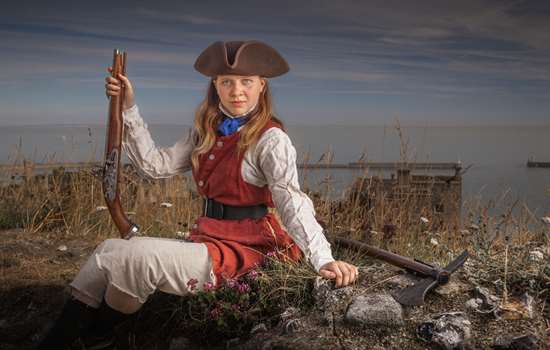07/09/2022
English Heritage exhibits Hadrian’s Wall oldest souvenirs
- New exhibition, Memento: Souvenirs from Hadrian’s Wall, celebrates nearly two millenia of keepsakes.
The Rudge Cup, made around 130AD, is a small bronze bowl with the names of Hadrian’s Wall forts inscribed on it. Featuring an illustration of the Wall it would have been picked out in coloured enamels (now lost). It is thought to have been made for a high ranking soldier or civil official who was stationed on the Wall and would have been a one off commission - an expensive purchase.
The Rudge Cup will sit alongside a replica of the Staffordshire Moorlands Pan, also an historic souvenir as well as the Winterton Pan and the Brougham Patera, which although very similar in style, don’t feature the names of forts. They will join a host of keepsakes from the Wall, spanning nearly two millenia in a new display to mark 1900 years since the start of its construction. Other highlights inclue a large replica bust of Hadrian, a piece of the wooden fort at Carlisle, and a tin – recently acquired by English Heritage – filled with scavenged fragments that, according to a handwritten note attached to its lid, were discovered on a visit to Chesters in 1891.
Frances McIntosh, English Heritage Curator at Hadrian’s Wall, said:
'Many of us will have returned from our holidays this summer with a memento of our trip but the idea of collecting objects as a way of safekeeping memories is extremely old. In the second century visitors went to the trouble of commissioning their own souvenirs, like the Rudge Cup.
We wanted to show how souvenirs have changed and, perhaps more importantly, how they haven’t. Some souvenirs can be whacky, or even tacky, whilst some are beautiful works of art, but all of them carry memories of a visit, and that is what makes them important to their owners, whether modern or Roman.'
The souvenir cups/pans in this display belong to a type of small colourful bronze vessels, dating from the late 1st- 3rd centuries, often used for drinking spiced wine. They usually had a handle, bowl and base, all cast separately. Larger, plainer versions of the vessels were part of a standard military equipment, so these finer versions may have had particular significance to soldiers.
It is not just Hadrian’s Wall where souvenirs could be purchased in the Roman period. In places like Athens, Ephesus and Alexandria, tourists could buy small-scale copies of statues and glasses decorated with images of sites.
Memento: Souvenirs from Hadrian’s Wall is now open at Chesters Roman Fort and runs until 30th October. Entry is included in the admission price. Search for English Heritage Chesters Roman Fort for more information.
For more from English Heritage, follow us on Twitter, Facebook and Instagram



